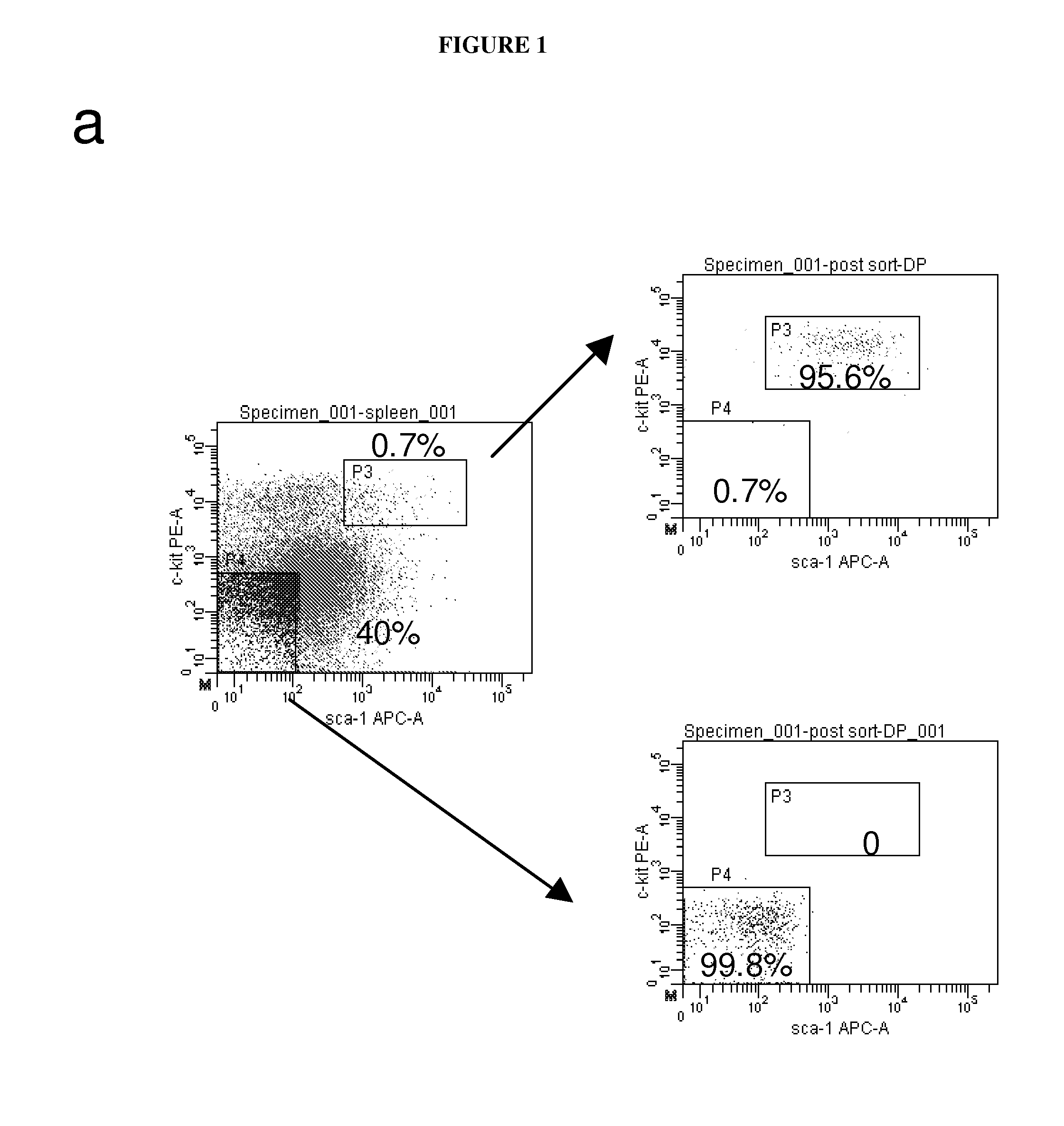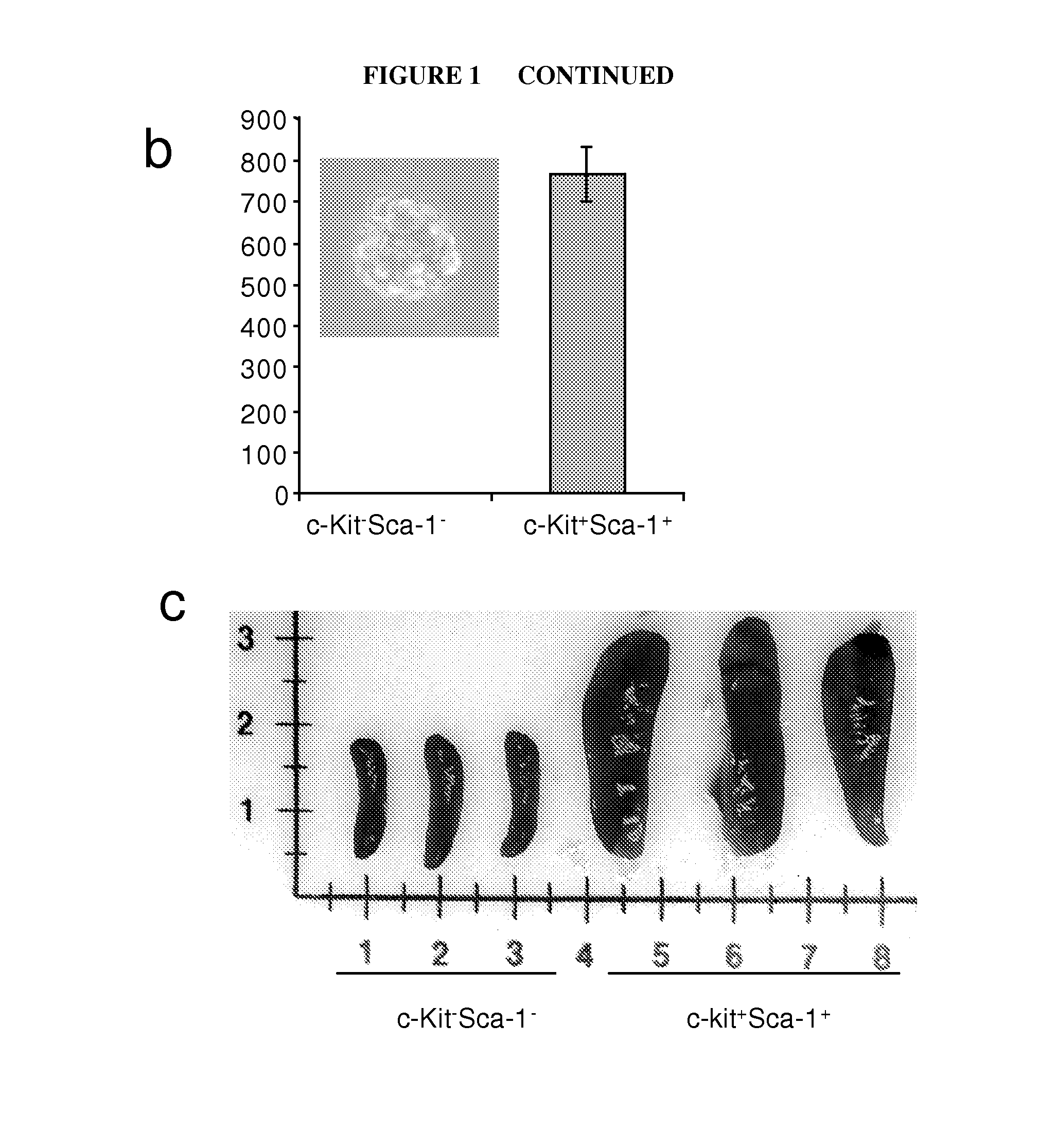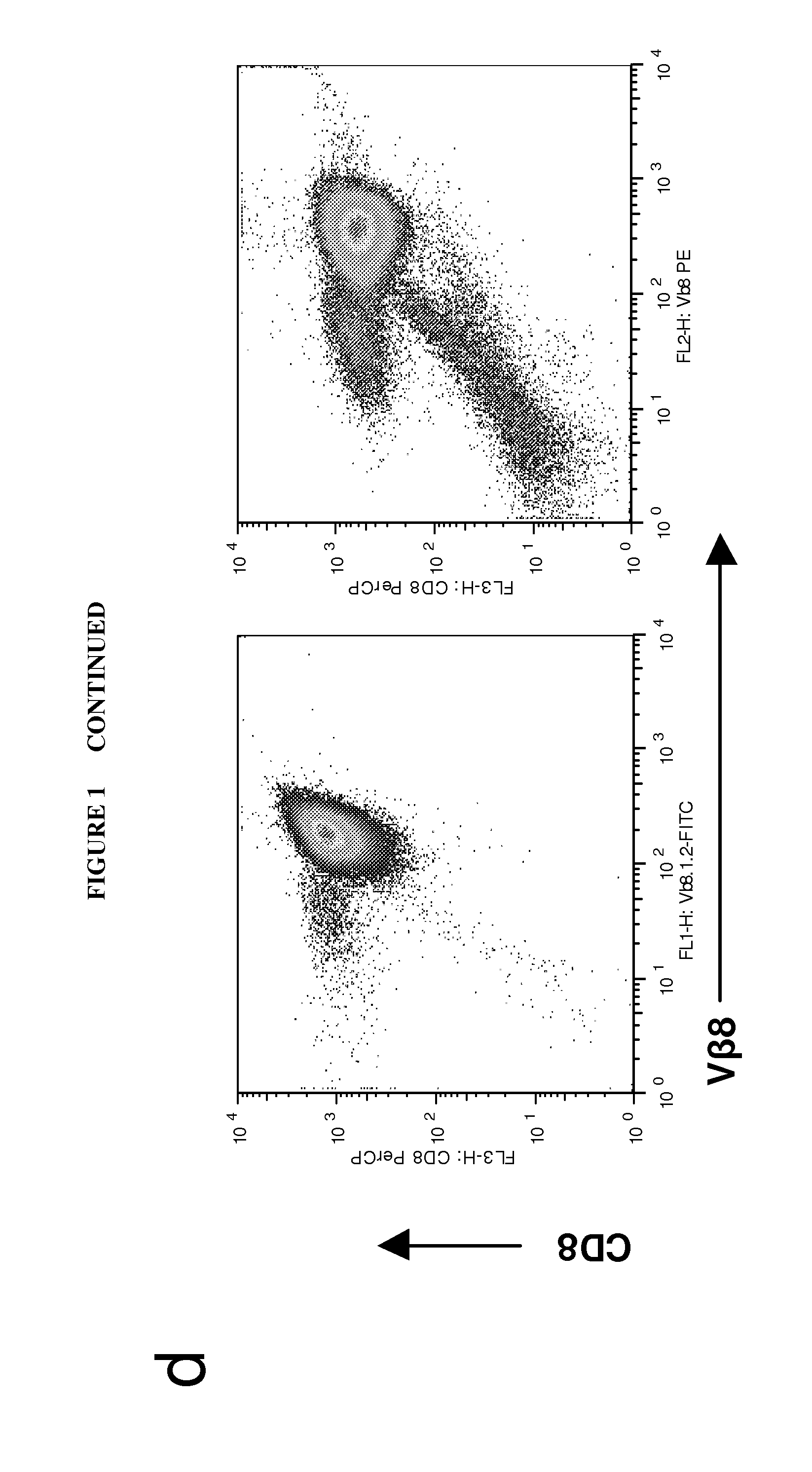Uses of hypoxia-inducible factor inhibitors
a technology of hypoxia-inducible factor and inhibitor, which is applied in the field of treating hematologic cancer, can solve the problems of rare remission or cure, csc must survive in an undifferentiated state, and the survival of csc may be underlie the difficulty of treating hematologic, so as to inhibit the maintenance or survival function
- Summary
- Abstract
- Description
- Claims
- Application Information
AI Technical Summary
Benefits of technology
Problems solved by technology
Method used
Image
Examples
example 1
Identification of Self-Renewing Lymphoma Initiating Cells in Syngeneic Immune Competent Host
[0073]Hundred percent of the transgenic mice (TGB) with insertional mutation of the Epm2a gene succumb to lymphoma. In search for the expression of potential stem cell markers in the TGB lymphoma cells, it was found that a small subset of cells expressed both c-Kit and Sca-1, which partly constitute markers for HSC (FIG. 1a). To test if these cells may have CSC activity, lymphoma cells from the spleen of TGB transgenic mice with tumors were sorted based on expression of both c-Kit and Sca-1 (FIG. 1a right panels). As shown in FIG. 1b, no colony formed from 103 of c-Kit−Sca-1− cells. In striking contrast, 103 of cells with c-Kit+Sca-1+ yielded about 800 colonies, which suggests that every cells in the subset was CFU. Most colonies are tightly packed (FIG. 1b insert), in contrast to the diverse colonies obtained from bone marrow HSC. The progenies of the c-Kit+Sca-1+ cells consist of both c-Kit...
example 2
Essential Role for Up-Regulation of HIF1α Expression in the Maintenance of CSC
[0076]Having established that the c-Kit+Sca-1+ cells are CSCs in the lymphoma model, the molecular program responsible for the self-renewal of CSC activity was identified, using CFU as a surrogate assay. As shown in FIG. 2a, treatment with pharmacologically effective doses of Ly294002 (inhibitor of PI-3 kinase-AKT signal pathway), Rapamycin (mTor-S6K protein synthesis pathway), SB216763 (GSK3β-beta-catenin pathway), Gö6983 (PKC inhibitor), 2-DG (hexokinase inhibitor), H89 (PKA-CREB), PDTC (NF-κB signal pathway), PD98059, SB203580, and SP600126 (MAPK family ERK, p38, and JNK respectively) had no effect on CFU. In contrast, low doses of echinomycin abrogated the CFU.
[0077]In order to monitor the HIF1α activity of the CSC, a lentiviral reporter was generated, consisting of triple HIF1 responsive elements (HRE) in the upstream of a minimum TATA box sequence and an EGFP sequence, as shown in FIG. 2b. A pause se...
example 3
Down-Regulation of Vhl in CSC is Essential for Maintenance of CSC
[0087]Since HIF1α is normally degraded under normoxia by a VHL-dependent mechanism, the expression of Vhl in the CSC was also tested. The data demonstrate an approximate 4-fold reduction in the Vhl transcripts of c-Kit+Sca-1+ cells (FIG. 5a). To determine the significant of Vhl down-regulation, the tumor cells were infected with Vhl-expressing lentivirus that also expresses GFP. The GFPhi and GFPlo subsets were compared for the abundance of the c-Kit+Sca-1+ subset. The GFPhi subset contained no c-Kit+Sca-1+ cells (FIG. 5b). Thus, high Vhl expression ablated the c-Kit+Sca-1+ cells. Consistent with this, the ectopic expression of Vhl significantly reduced the colony forming activity of the tumor cells (FIG. 5c). To test the role for reduced Vhl in tumor-initiating activity, vector and VHL cDNA transduced tumor cells were transplanted into B10.BR mice. As shown in FIG. 5d, transduction with lentivirus expressing Vhl cDNA ...
PUM
| Property | Measurement | Unit |
|---|---|---|
| multi-drug resistance | aaaaa | aaaaa |
| resistance | aaaaa | aaaaa |
| morphology | aaaaa | aaaaa |
Abstract
Description
Claims
Application Information
 Login to View More
Login to View More - R&D
- Intellectual Property
- Life Sciences
- Materials
- Tech Scout
- Unparalleled Data Quality
- Higher Quality Content
- 60% Fewer Hallucinations
Browse by: Latest US Patents, China's latest patents, Technical Efficacy Thesaurus, Application Domain, Technology Topic, Popular Technical Reports.
© 2025 PatSnap. All rights reserved.Legal|Privacy policy|Modern Slavery Act Transparency Statement|Sitemap|About US| Contact US: help@patsnap.com



